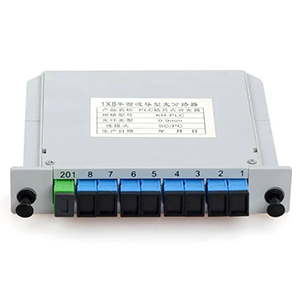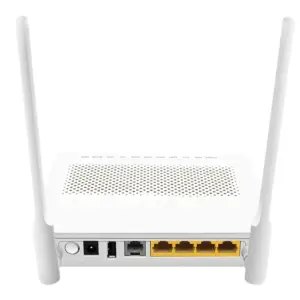Thank you for choosing to read this article. Today I will introduce you to 10Gb optical fiber and its important role in data transmission. 10Gb fiber optic is a high-speed, high-capacity fiber optic transmission solution that delivers superior performance and reliability for modern network connections.
Overview of 10Gb optical fiber
10Gb fiber optic refers to a fiber optic network connection that supports 10 Gigabit (10Gb) data transmission rates. It is a high-speed, high-capacity fiber optic transmission solution used to transmit large amounts of data in computer networks.
10Gb optical fiber plays an important role in data transmission:
-
High-speed data transmission: 10Gb optical fiber provides a data transmission rate of up to 10 Gigabit per second (Gbps), which is 10 times faster than traditional Gigabit Ethernet (1Gb). This high-speed transmission capability makes the transmission of large-scale data faster and more efficient.
-
Large-capacity network connection: 10Gb optical fiber meets the transmission needs of large amounts of data in modern networks by providing high-bandwidth network connections. It can support the simultaneous transmission of multiple high-definition videos, large files and complex applications, making network communication smoother and more reliable.
-
Data center applications: In data center environments, 10Gb optical fiber is used to connect key equipment such as servers, storage devices, and network switches. It enables fast data transmission and processing and supports the operation and management of large-scale data centers.
-
High-performance computing: In the field of high-performance computing (HPC), 10Gb optical fiber is used to connect supercomputers, parallel processing clusters, and data storage systems. It provides sufficient bandwidth and speed for high-performance computing tasks, speeding up the process of computing and data analysis.
-
Data backup and replication: 10Gb optical fiber is also very useful in data backup and replication. Its ability to quickly transfer large amounts of data makes the backup and recovery process more efficient while reducing backup windows and the risk of data loss.
In short, 10Gb optical fiber, as a high-speed, large-capacity network connection solution, plays an important role in modern data transmission. It is widely used in data centers, enterprise networks, high-performance computing and other scenarios that require large-scale data transmission, providing key support for fast and reliable data communication.
Advantages and features of 10Gb optical fiber
10Gb optical fiber has the following advantages and characteristics compared with traditional optical fiber transmission:
-
Higher data transmission rate: 10Gb optical fiber provides a data transmission rate of 10 Gigabit per second (Gbps), which is 10 times faster than traditional Gigabit Ethernet (1Gb). This means it can transfer large amounts of data faster and improve data transfer efficiency.
-
Greater bandwidth capacity: 10Gb optical fiber has greater bandwidth capacity, allowing it to transmit more data streams and traffic at the same time. This is very important for application scenarios that need to process large amounts of data, such as data centers, cloud computing, and high-performance computing.
-
High-speed network connection: 10Gb optical fiber provides reliable high-speed network connection, making data transmission more stable and faster. This is critical for tasks such as real-time applications, video streaming, and large file transfers.
-
Support long-distance transmission: 10Gb optical fiber can support long-distance data transmission, ranging from tens of meters to dozens of kilometers. This makes it suitable for large-scale network architectures, including cross-floor, cross-campus and cross-city connectivity needs.
-
Multi-mode/single-mode fiber interface: 10Gb fiber can be connected using multi-mode fiber (MMF) or single-mode fiber (SMF). Multimode fiber is suitable for short-distance transmission, while single-mode fiber is suitable for long-distance transmission. This flexibility allows 10Gb fiber to adapt to different network topologies and distance requirements.
-
Backward compatibility: 10Gb optical fiber can be backward compatible with lower-speed optical fiber network equipment, which means it can interconnect with 1Gb or 100Mb equipment. This compatibility makes network upgrades and expansions more convenient and economical.
To sum up, compared with traditional optical fiber transmission, 10Gb optical fiber has advantages and characteristics such as higher data transmission rate, larger bandwidth capacity, support for long-distance transmission and flexible optical fiber interface selection. This makes it an important choice for high-speed, high-capacity network connections and is widely used in data centers, enterprise networks, and other scenarios that require high-performance data transmission.
Application scenarios of 10Gb optical fiber
10Gb optical fiber has a wide range of application scenarios in many fields. The following are some of the important fields:
-
Data Center: Data center is a critical environment for processing and storing large amounts of data. 10Gb fiber is used in data centers to connect critical equipment such as servers, storage devices and network switches. It provides high-speed, large-capacity data transmission and supports fast interconnection within and between data centers.
-
Enterprise network: In enterprise networks, 10Gb optical fiber is used to build high-speed, high-performance local area networks (LAN). It can connect different departments, offices and floors, supporting large-scale data transmission and multimedia applications. 10Gb fiber in enterprise networks can improve office efficiency and speed up data sharing and collaboration.
-
High-performance computing (HPC): In the field of high-performance computing, 10Gb optical fiber is used to connect supercomputers, parallel processing clusters, and data storage systems. It provides high-bandwidth and low-latency network connections to support large-scale scientific computing, simulation and data analysis tasks.
-
Video streaming: With the popularity of high-definition video and streaming services, high-speed and stable data transmission has become increasingly important. 10Gb optical fiber can meet the needs of video streaming media, supporting real-time high-definition video transmission and smooth media playback experience.
-
Cloud Computing: Cloud computing requires large-scale data transmission and processing capabilities. 10Gb optical fiber is used in cloud computing environments to connect key components such as data centers, cloud servers and storage systems. It provides stable high-speed network connections for cloud services and supports the operation of large-scale data centers and cloud computing applications.
In these application scenarios, 10Gb optical fiber plays a key role, providing high-speed, large-capacity data transmission and reliable network connections. Its importance in large-scale data transmission, video streaming and cloud computing is self-evident, providing key support for modern network communications and data processing.
10Gb optical fiber deployment and upgrade recommendations
Deploying and upgrading to 10Gb fiber requires consideration of multiple aspects, including fiber cabling, equipment configuration, network optimization, and factors such as network requirements, equipment compatibility, and cost-effectiveness. Here are some suggestions:
Guidance for deploying 10Gb fiber:
-
Fiber optic cabling: Ensure that high-quality fiber optic cables and connectors are used and installed in accordance with standard fiber optic cabling specifications. Avoid bending, twisting or overstretching fiber optic cables to ensure the quality and stability of signal transmission.
-
Equipment configuration: Ensure that the equipment used (such as servers, switches, and storage devices) supports 10Gb fiber optic interfaces and correctly configure the equipment to support 10Gb transmission rates. This may involve device firmware upgrades or configuration changes.
-
Network Optimization: Network optimization is performed to ensure optimal performance and stability. This includes optimizing network topology, configuring load balancing and traffic management to reduce network latency and packet loss, and improve transmission efficiency.
Recommendations for upgrading to 10Gb fiber:
-
Network needs assessment: Assess the needs and bottlenecks of the current network to determine whether it is necessary to upgrade to 10Gb optical fiber. Consider factors such as the amount of data in the network, bandwidth requirements, and application performance to determine whether higher transfer rates and capacities are required.
-
Equipment compatibility: Ensure that equipment in the network (such as servers, storage devices and switches) supports 10Gb optical fiber interfaces and is compatible with existing equipment. If equipment needs to be upgraded to support 10Gb fiber, ensure compatibility and interoperability between equipment.
-
Cost-benefit considerations: Evaluate the cost-benefit of upgrading to 10Gb fiber. Consider factors such as fiber optic cabling, equipment upgrades, configuration changes, and maintenance costs and weigh them against expected performance improvements and business needs.
-
Gradual upgrade: If the cost is high or the network needs are not urgent, you can consider incremental upgrade. For example, upgrade core equipment and key links to 10Gb fiber first, and gradually expand to other parts to balance cost and performance needs.
-
Professional consultation: If you are confused or unsure about deploying and upgrading 10Gb fiber, it is recommended to consult a network professional or engineer. They can provide professional advice and customized solutions to meet specific network needs and budget requirements.
The future development trend of 10Gb optical fiber
10Gb optical fiber will continue to evolve in future developments to meet the growing data transmission needs and requirements of emerging technologies. In summary, future 10Gb fiber optics will continue to develop and evolve to meet the challenges of growing data demands and emerging technologies. Higher speed, lower power consumption and more flexible design will become the direction of development. At the same time, the combination with emerging technologies will further expand the application fields of 10Gb optical fiber and provide key support for high-speed and high-performance communications in the digital era.
Summarize:
In the future, 10Gb optical fiber will continue to develop to achieve higher speeds, lower power consumption and more flexible designs. At the same time, the combination of 10Gb optical fiber with emerging technologies, such as 5G network, Internet of Things and artificial intelligence, will further promote its development and application.
If you are interested in 10Gb optical fiber, please consider contacting us and we will provide you with professional advice and support to help you choose the 10Gb optical fiber solution that suits your needs and achieve high-speed, reliable data transmission.
- What type of fiber is needed for 10Gb?
- What is 10G Fibre?
- Is 10G better than fiber?
- Can you get 10Gb on multimode fiber?
- Can 62.5 micron fiber support 10Gb?
- Is 10G faster than fiber optic?
- Is 10G faster than 5G?
- Can CAT6 do 10Gb?
- Is 10G fibre enough?












